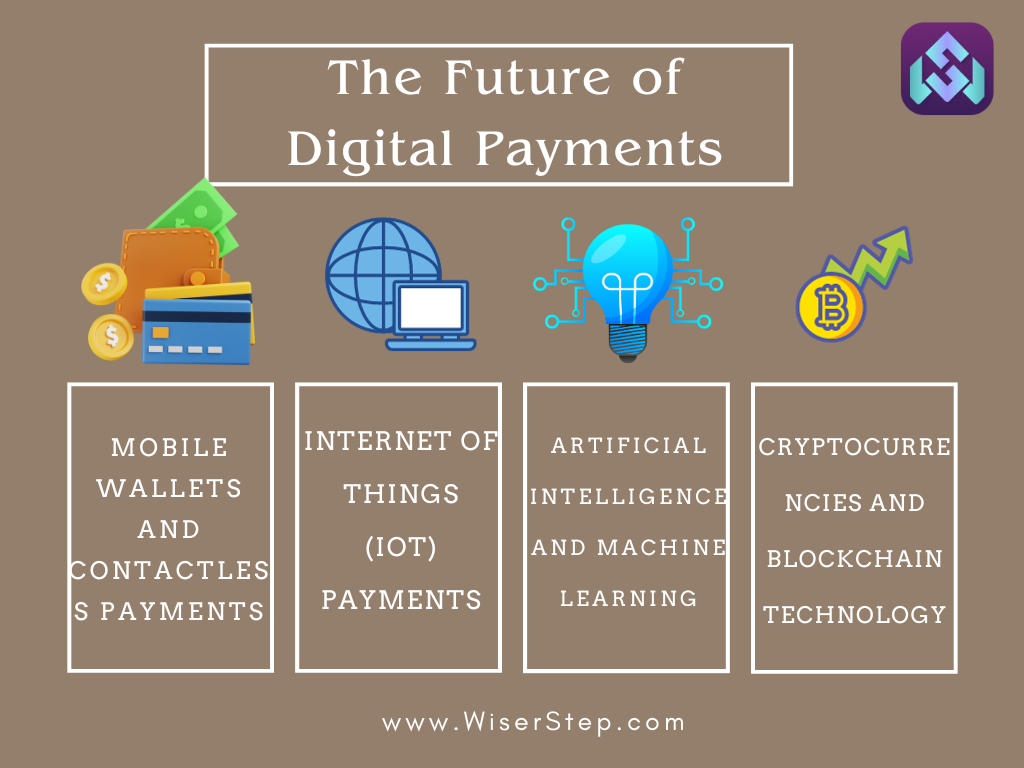In today’s fast-paced world, digital payments have become an integral part of our daily lives, transforming the way we conduct transactions. As technology continues to evolve, the future of digital payments holds exciting possibilities, introducing innovative trends that promise greater convenience, security, and efficiency for consumers and businesses alike.
Mobile Wallets and Contact less Payments
Mobile wallets and contactless payments have gained immense popularity in recent years, allowing users to make transactions using their smartphones or wearable devices. With the rise of NFC (Near Field Communication) technology, consumers can simply tap their devices to complete a payment. This trend is expected to grow, enabling faster and more convenient transactions without the need for physical cash or cards.
Cryptocurrencies and Blockchain Technology
Cryptocurrencies, led by Bitcoin and Ethereum, have disrupted traditional financial systems. Blockchain technology, the underlying foundation of cryptocurrencies, ensures secure, transparent, and tamper-proof transactions. The decentralized nature of cryptocurrencies eliminates the need for intermediaries like banks, making transactions faster and more cost-effective. As more businesses and consumers embrace digital currencies, the future of payments could be entirely decentralized.
Biometric Authentication
Biometric authentication methods, such as fingerprint recognition, facial recognition, and even voice recognition, are enhancing the security of digital payments. Biometric data is unique to individuals, making it a robust way to confirm identities and authorize transactions. This trend is set to grow, providing a seamless and secure payment experience while reducing the risk of fraud and unauthorized access.
Internet of Things (IoT) Payments
The Internet of Things (IoT) has paved the way for interconnected devices, from smart refrigerators to wearable gadgets. In the future, these IoT devices could facilitate automated payments. For instance, your smart fridge could detect when you’re running low on groceries and reorder them online, or wearable devices could enable contactless payments without the need for a physical card or smartphone. IoT payments offer unparalleled convenience and efficiency, shaping the future of digital transactions.
Artificial Intelligence and Machine Learning
Artificial intelligence (AI) and machine learning algorithms are revolutionizing digital payments by detecting patterns, preventing fraud, and personalizing user experiences. AI-driven chatbots and virtual assistants are also being used for customer support in payment applications. These technologies enhance security, streamline payment processes, and provide users with tailored recommendations, enhancing overall user satisfaction.
Central Bank Digital Currencies
Several countries are exploring the concept of Central Bank Digital Currencies (CBDCs), which are digital forms of their national currencies. Unlike cryptocurrencies, CBDCs are centralized and issued and regulated by governments. CBDCs could provide a secure and stable digital payment method, ensuring financial inclusion and reducing transaction costs, especially for cross-border payments.
Enhanced Security Measures
With the growing reliance on digital payments, enhancing security measures is paramount. Innovations such as tokenization, multi-factor authentication, and real-time transaction monitoring are becoming standard practices. Additionally, advancements in cybersecurity technologies are crucial to safeguarding digital payment ecosystems against cyber threats and ensuring consumer trust.
In conclusion, the future of digital payments is marked by innovation, convenience, and security. As technology continues to advance, consumers and businesses can expect a seamless, fast, and secure payment experience. Embracing these trends and innovations not only enhances efficiency but also empowers individuals and organizations to navigate the evolving landscape of digital transactions confidently. The future of payments is digital, and it is set to revolutionize the way we exchange value in the years to come.

